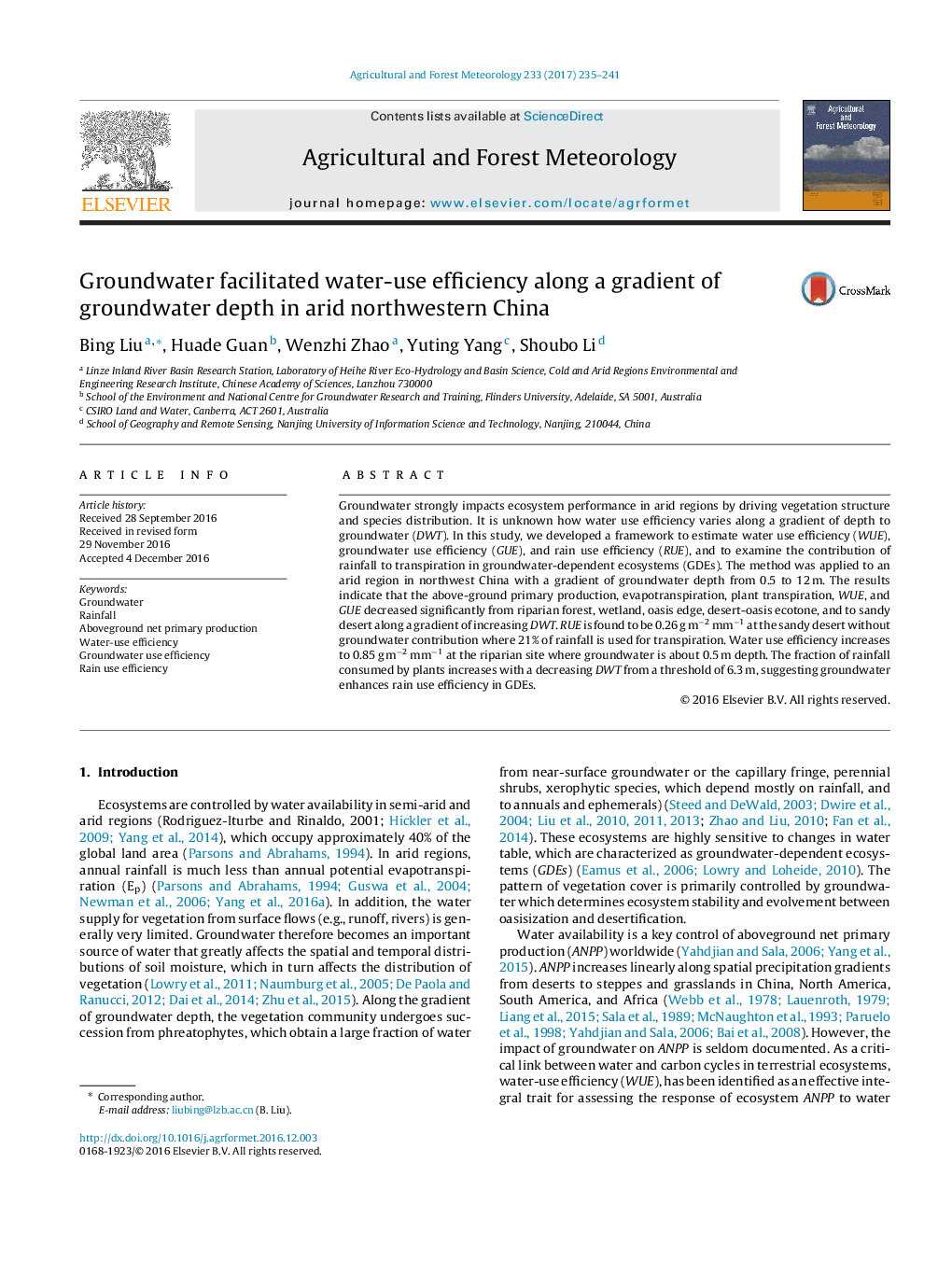| Article ID | Journal | Published Year | Pages | File Type |
|---|---|---|---|---|
| 4758967 | Agricultural and Forest Meteorology | 2017 | 7 Pages |
Abstract
Groundwater strongly impacts ecosystem performance in arid regions by driving vegetation structure and species distribution. It is unknown how water use efficiency varies along a gradient of depth to groundwater (DWT). In this study, we developed a framework to estimate water use efficiency (WUE), groundwater use efficiency (GUE), and rain use efficiency (RUE), and to examine the contribution of rainfall to transpiration in groundwater-dependent ecosystems (GDEs). The method was applied to an arid region in northwest China with a gradient of groundwater depth from 0.5 to 12 m. The results indicate that the above-ground primary production, evapotranspiration, plant transpiration, WUE, and GUE decreased significantly from riparian forest, wetland, oasis edge, desert-oasis ecotone, and to sandy desert along a gradient of increasing DWT. RUE is found to be 0.26 g mâ2 mmâ1 at the sandy desert without groundwater contribution where 21% of rainfall is used for transpiration. Water use efficiency increases to 0.85 g mâ2 mmâ1 at the riparian site where groundwater is about 0.5 m depth. The fraction of rainfall consumed by plants increases with a decreasing DWT from a threshold of 6.3 m, suggesting groundwater enhances rain use efficiency in GDEs.
Keywords
Related Topics
Physical Sciences and Engineering
Earth and Planetary Sciences
Atmospheric Science
Authors
Bing Liu, Huade Guan, Wenzhi Zhao, Yuting Yang, Shoubo Li,
